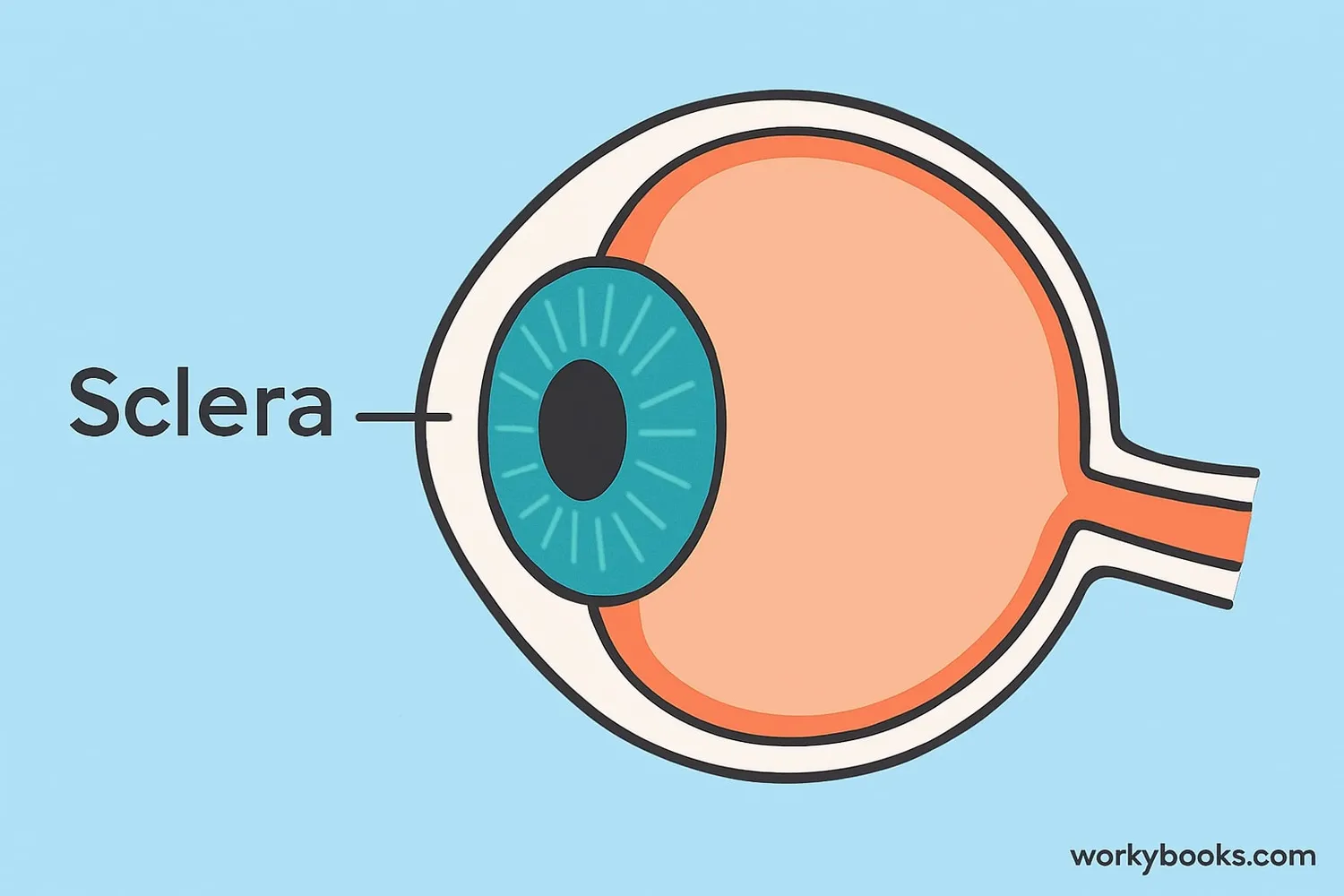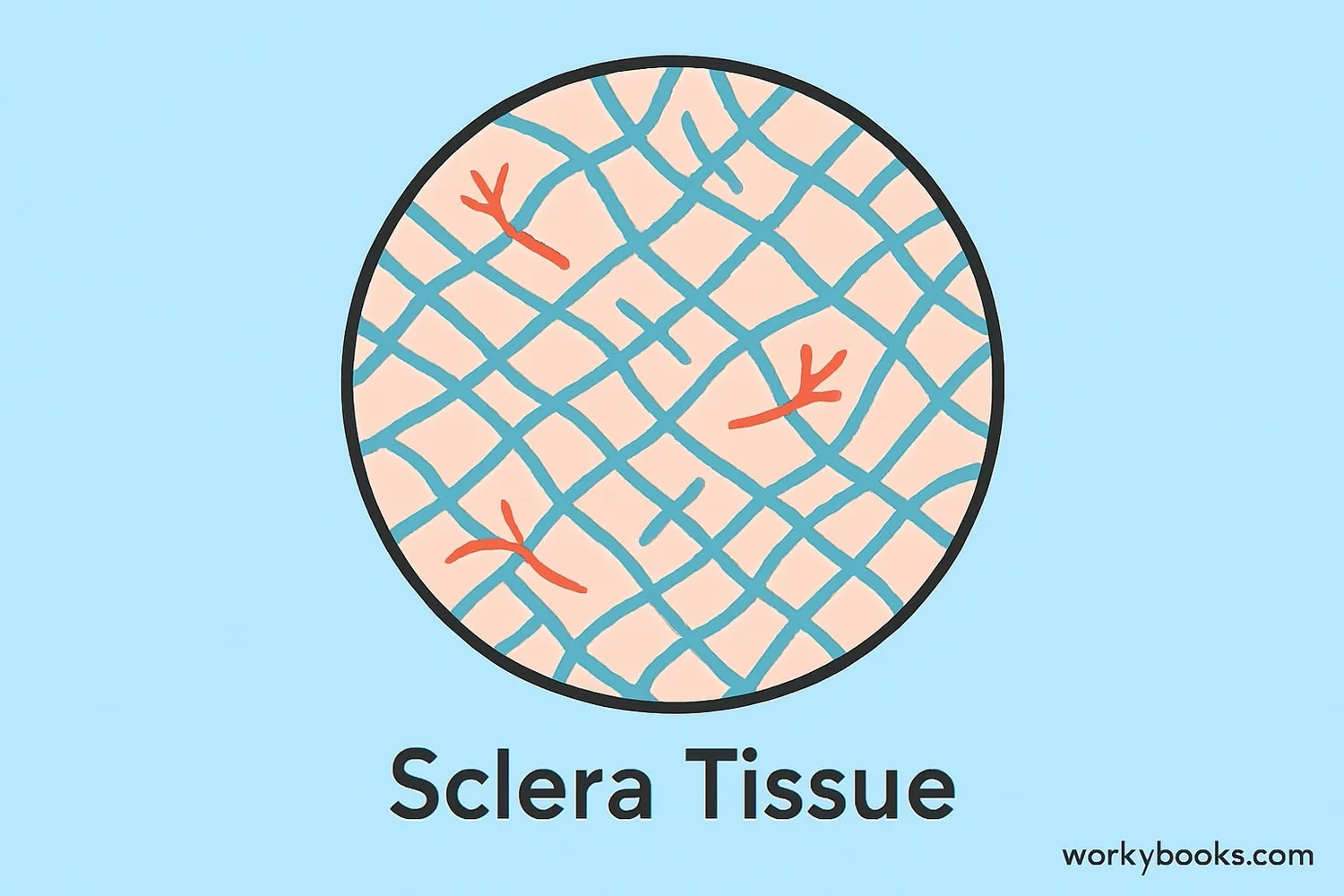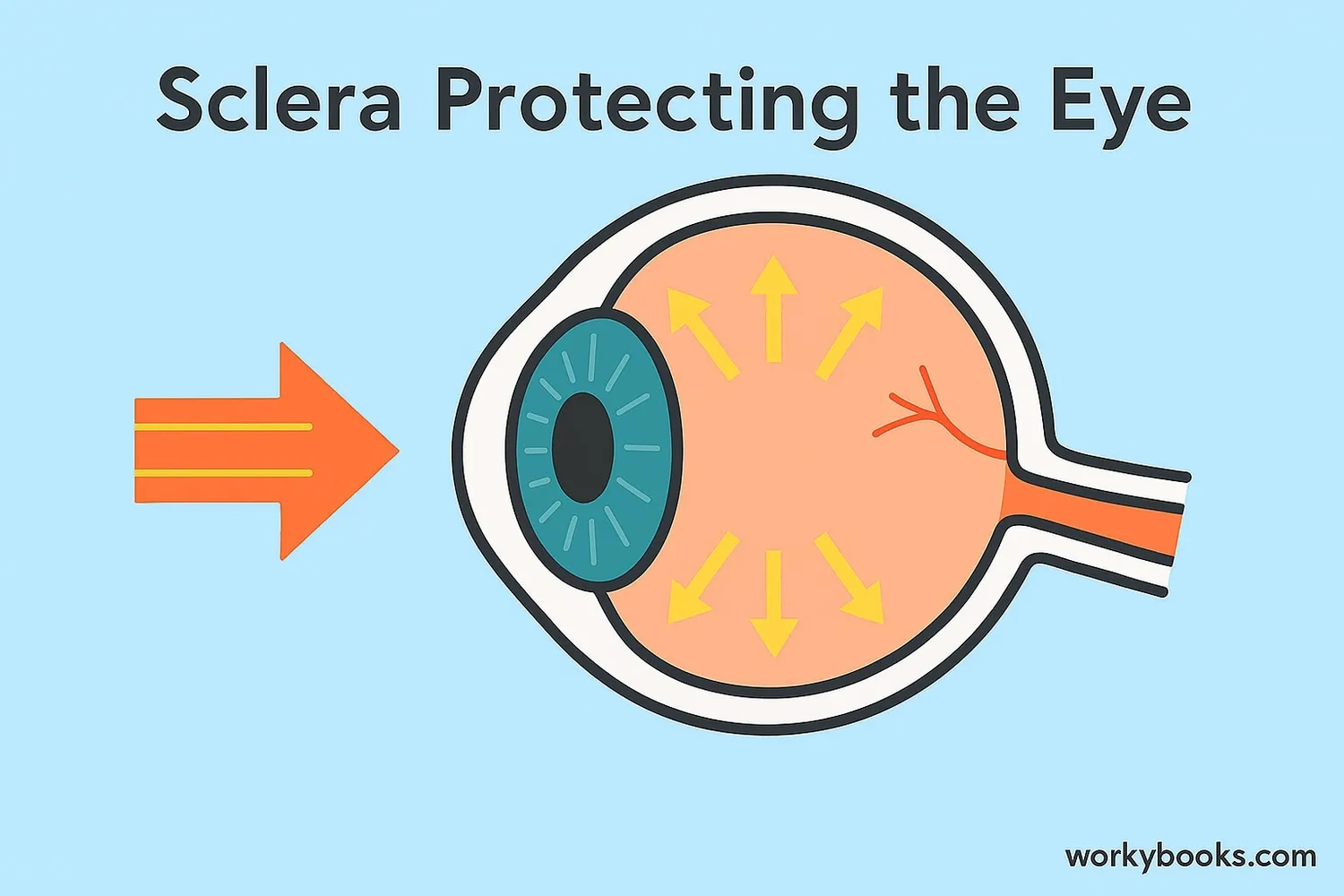Sclera - Definition, Examples, Quiz, FAQ, Trivia
Discover the protective outer layer of your eye and how it keeps your vision safe
What is the Sclera?

The sclera is the white, protective outer layer of your eyeball. It's the part of your eye that isn't the colored iris or the black pupil. The sclera is made of strong collagen fibers that form a tough, flexible covering that protects the delicate inner parts of your eye.
Think of the sclera as the "wall" of your eyeball. Just like the walls of a house protect what's inside, the sclera protects the important parts of your eye that help you see. It's what gives your eye its round shape and helps it stay firm.
Did You Know?
Human babies are born with bluish-gray sclera that gradually become white during their first year of life!
Sclera Structure & Function

The sclera is made up of several layers of strong collagen fibers that are arranged in a criss-cross pattern. This special arrangement makes the sclera both strong and slightly flexible. Here are the main parts of the sclera:
Episclera
The outermost layer that contains blood vessels
Sclera Proper
The main thick layer made of collagen fibers
Lamina Fusca
The inner layer that connects to the choroid
The sclera has several important jobs:
• Protection: It shields the delicate inner parts of your eye from injury
• Structure: It maintains the shape of your eyeball
• Attachment: It provides a place for your eye muscles to attach so your eyes can move
• Pressure maintenance: It helps maintain the pressure inside your eye
Science Connection
The collagen in your sclera is similar to the collagen in your skin and bones, but arranged differently to provide the perfect combination of strength and flexibility for your eyes.
Importance & Protection

The sclera is incredibly important for maintaining good eye health and clear vision. Without this protective covering, your eyes would be much more vulnerable to injury and infection.
Physical Protection
Shields the retina, lens, and other delicate internal structures
Pressure Maintenance
Helps maintain proper internal eye pressure for good vision
Muscle Attachment
Provides anchoring points for the six muscles that move your eyes
To keep your sclera and eyes healthy:
• Wear protective eyewear during sports or activities that could injure your eyes
• Eat a balanced diet with vitamins that support eye health
• Have regular eye examinations to check for any issues
• Protect your eyes from excessive UV light with sunglasses
• Avoid rubbing your eyes too hard
Eye Examination Importance
During an eye examination, doctors can detect changes in sclera color that might indicate health issues. Yellowish sclera can suggest liver problems, while redness might indicate inflammation.
Eye Anatomy Quiz
Test your knowledge about the sclera and eye anatomy with this quiz. Answer all 5 questions to see how much you've learned.
Frequently Asked Questions
Here are answers to some common questions about the sclera:
Interesting Eye Facts
Discover some amazing facts about the sclera and eyes!
Human Uniqueness
Humans are among the few animals with clearly visible white sclera. This may have evolved to help us communicate through eye gaze and direction.
Size Consistency
The sclera accounts for about 80% of the eyeball's surface area. Despite different eye colors among people, everyone's sclera is white (when healthy).
Variable Thickness
The sclera isn't equally thick everywhere. It's thickest at the back of the eye (about 1mm) and thinnest at the attachment points of eye muscles (about 0.3mm).
Medical Indicator
Doctors can sometimes detect health conditions by examining the sclera. Yellowing may indicate liver issues, while blue tinting can suggest bone disorders.


